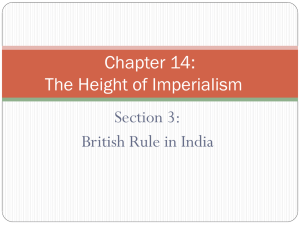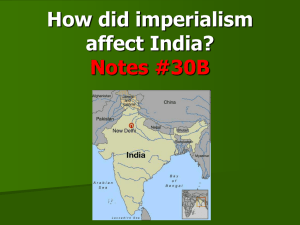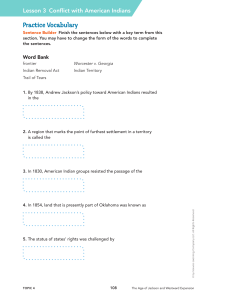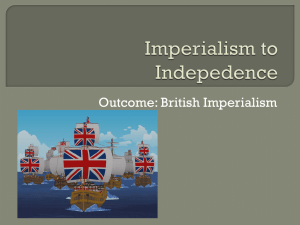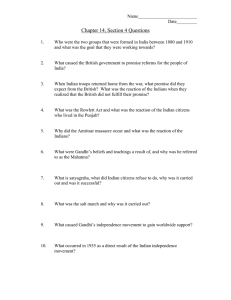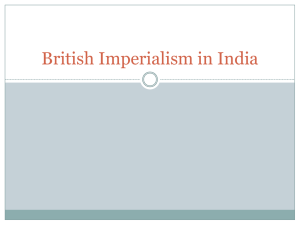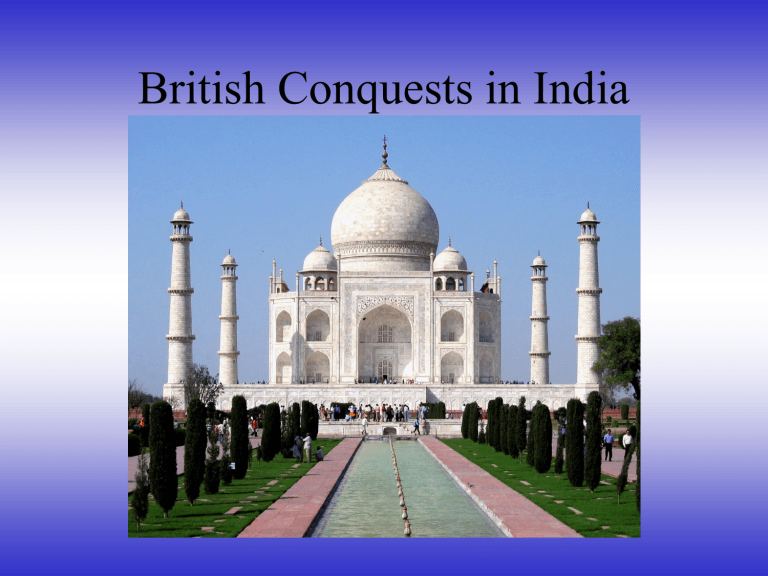
British Conquests in India British East India Company • A British company that basically ran India • Gained control after a decisive victory at the Battle of Plassey in 1757 • Controlled an area that included modern Bangladesh, most of southern India, and nearly all the territory along the Ganges River in the north. British East India Company • Cotton cloth woven by Indian weavers imported into Britain in huge quantities to supply a worldwide demand for cheap, washable, lightweight fabrics for dresses and furnishings. Sepoy Mutiny 1857 • East India company even had its own army, led by British officers and staffed by sepoys, or Indian soldiers. • Divide and conquer strategy had worked well for the British – Religious differences offered an easy way to divide Hindus from Muslims • Uniting factor – Racist, superior and paternalistic attitudes of the British in India gave the Indians something to unite against The Attack of Mutineers, July 30, 1857 Sepoy Mutiny • Sepoy rebelled against East India Company rule – Resulted in the end of 100 years of company rule in India • British government took direct control to protect their valuable trading empire and ruled from 1858 to 1947 • The Indians could not unite against the British due to weak leadership and serious splits between Hindus and Muslims. • The mutiny increased distrust between the British and the Indians. Resentment of British Rule • second-class citizens in their own country. • Even Indians with a European education faced discrimination. • barred from top posts in the Indian Civil Service. • paid less than Europeans. Beginnings of Indian Nationalism • The new Indian middle classes slowly grew tired of the injustice of British rule • The new nationalists wrote in both English and their regional languages and turned to aspects of Indian tradition, especially Hinduism, as a rallying ground for national pride – Ignored or overlooked Muslim leaders • 1885 – a large group of these new Indian nationalists founded the Indian National Congress Positive Effects - India • the world’s third largest railroad network was a major British achievement. • railroads enabled India to develop a modern economy and brought unity to the connected regions. • a modern road network, telephone and telegraph lines, dams, bridges, and irrigation canals • Sanitation and public health improved. • Schools and colleges were founded, and literacy increased. • British troops cleared central India of bandits • End to local warfare among competing local rulers. Negative Impact for India • Harsh and racist actions against Indians • British held much of the political and economic power. • Restricted Indian-owned industries such as cotton textiles. • conversion to cash crops reduced food production, causing famines in the late 1800s. • Loss of cultural practices and language “Apartheid” •“In India every European, be he German, or Pole or Rumanian, is automatically a member of the ruling race. Railway carriages, station retiring rooms, benches in parks, etc. are marked 'For Europeans Only.‘ This is bad enough in South Africa or elsewhere, but to have to put up with it in one's own country is a humiliating and exasperating reminder of one's enslaved condition.” -Jawaharlal Nehru, Indian nationalist and first Prime Minister What did the British get? • To bring raw materials, especially cotton, to ports for shipment to England. • To bring manufactured goods from England for sale in an expanding Indian market. • British-owned Indian industry expanded from 1880 to 1914, but not Indian. • spread British language, customs and Christian religion • Took many artworks – sculpture, paintings and other Indian artifacts - that can be seen in many British museums today What was negative for British? • Paid for infrastructure (roads, telephone, railroads, etc.) development • Paid for education improvement • Money spent on military and government in India
